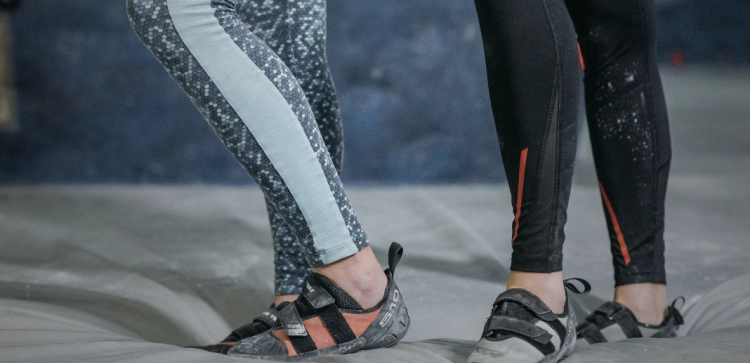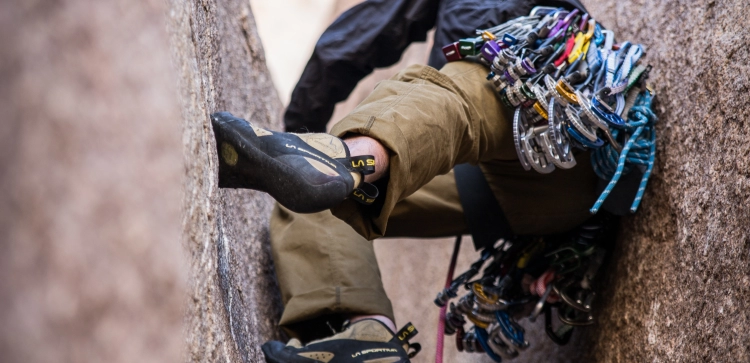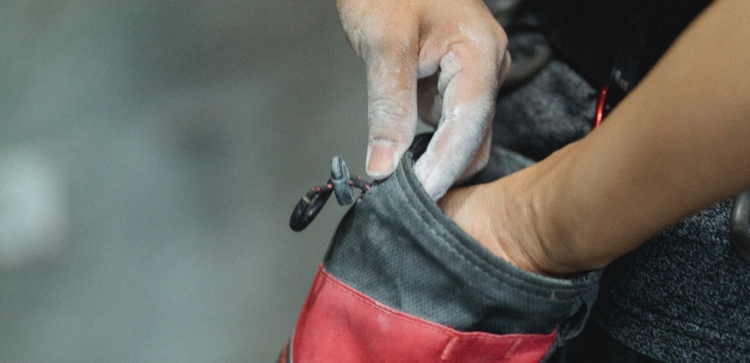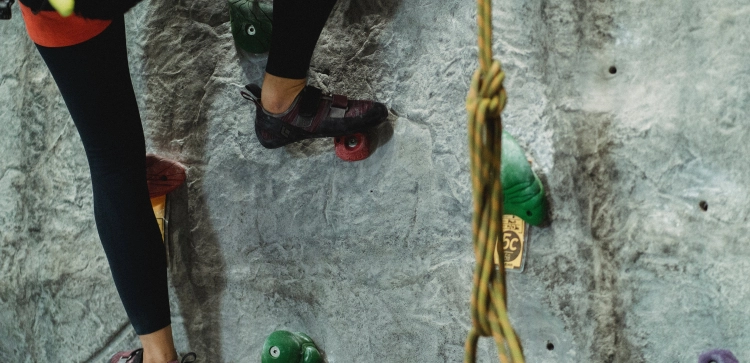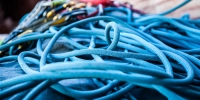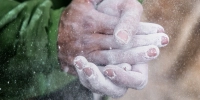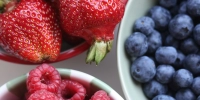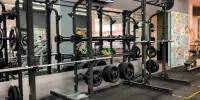Climbing Chalk 101: The Ultimate Beginner's Guide

Whether you're a seasoned climber or just starting out, one crucial aspect that can significantly enhance your performance is climbing chalk. Climbing chalk is a vital tool that aids in maintaining a strong grip on the rock or climbing holds, preventing your hands from slipping and allowing you to better tackle challenging routes.
In this guide for complete beginners in the climbing world, we will delve into exploring what climbing chalk actually is, how it helps enhance grip, and more tips to keep your grip at its peak.
Understanding Climbing Chalk
Before we dive into how climbing chalk actually helps improve grip and climbing, it's essential to understand what climbing chalk actually is.
Climbing chalk is typically made from magnesium carbonate, a white powdery substance that effectively absorbs moisture from your hands, increasing friction and reducing slippage. It comes in various forms, including loose chalk, chalk balls, and liquid chalk, each offering unique benefits depending on individual preferences and climbing conditions.
For more on the different types of climbing chalk, head over to our article covering the different types of climbing chalk, and the pros and cons of each.
Composition and Types of Climbing Chalk
Climbing chalk primarily consists of magnesium carbonate, but manufacturers may add drying agents or other compounds to enhance its moisture-absorbing properties. It's available in different textures, from fine to chunky, allowing climbers to choose the type they prefer. Some brands also offer scented chalk, as well as chalk specifically designed for sensitive skin or those with allergies, ensuring a comfortable climbing experience for everyone.
How Climbing Chalk Enhances Grip
The main purpose of climbing chalk is to create a dry surface on your hands, enhancing friction between your skin and the climbing holds. As you climb, your hands naturally produce sweat, which can compromise your grip and cause you to slip. By applying climbing chalk, you absorb excess moisture, preventing your hands from becoming slippery and improving your ability to grasp holds securely. It also helps to reduce the formation of blisters, keeping your hands in better condition during intense climbing sessions.
Importance of Cleaning Climbing Holds
In addition to chalking up your hands, it's equally important to make sure that the climbing holds you will be gripping are clean to help ensure maximum friction.
Over time, climbing holds can accumulate a lot of chalk, sweat, and dirt. This reduces their friction, making them slippery and very difficult to grip. In these situations, the amount of chalk on your hands simply won’t matter as much, since the climbing holds themselves would have much less friction than normal.
This is especially true for harder routes and for holds that are harder to grip, such as pinches, slopers, and crimps.
Before getting on the route, take a moment to inspect the holds. Try to notice the areas that are the dirtiest or that have the most chalk on them. These are usually the spots that most climbers grip the holds, and they will usually be the most slippery spots on the holds. Use a climbing brush to remove the excess chalk and debris.
Dealing with Sweaty Hands and Excessive Moisture
In situations where you're dealing with sweaty hands or excessive moisture, consider using liquid chalk. Liquid chalk offers prolonged grip enhancement and effectively combats sweat. Apply a small amount to your hands and let it dry before starting your climb.
Respect for Climbing Gyms and Outdoor Climbing Areas
Respect the rules and regulations set by climbing gyms and outdoor climbing areas regarding chalk usage. Some gyms may have specific guidelines on the type of chalk allowed or restrictions on liquid chalk. Outdoor climbing areas, especially in sensitive environments, may have stricter regulations or even bans on chalk usage. Be mindful of these guidelines and show respect for the natural surroundings and the climbing community.
Conclusion
Chalk is probably one of the easiest pieces of climbing gear to understand and to choose from, not to mention the cheapest, yet it can have a huge impact on your climbing performance. If you are not sure which type of chalk to use, just try them all out and see which you prefer. There is no right or wrong, it’s just a matter of your personals preference, and of course what is allowed in the area you are climbing in.

